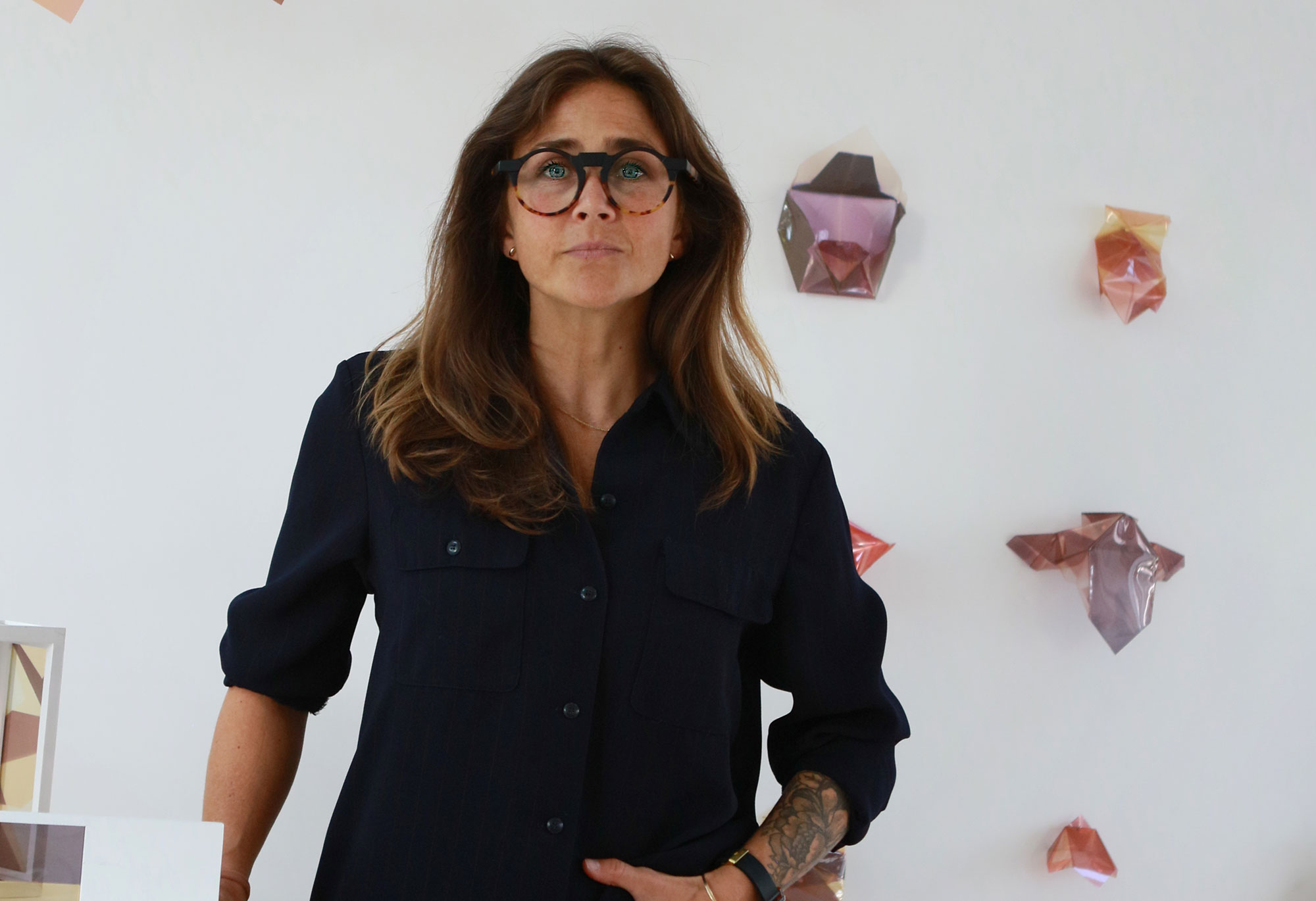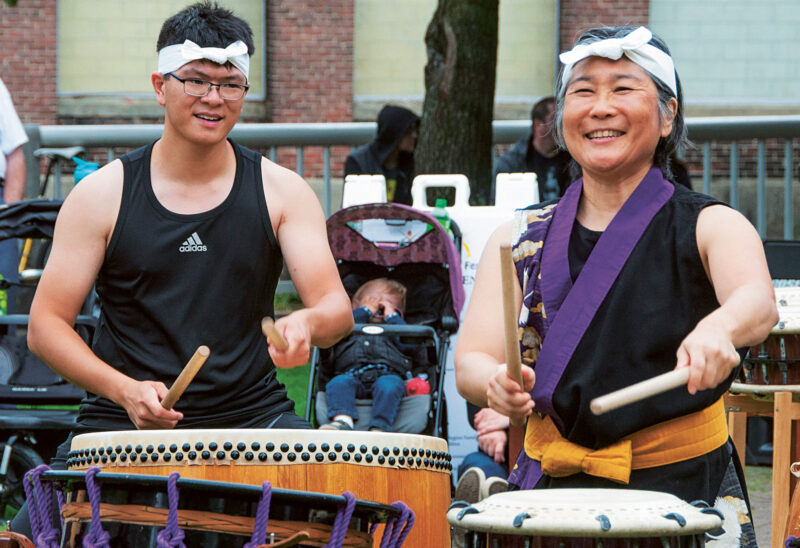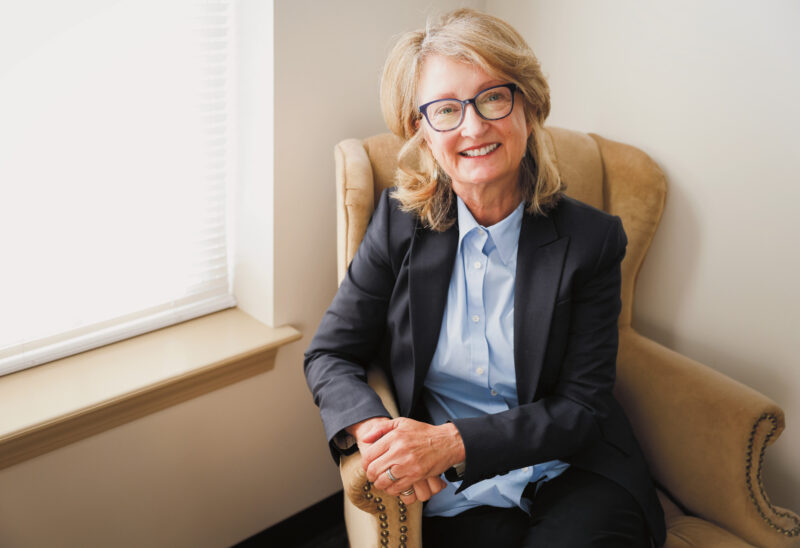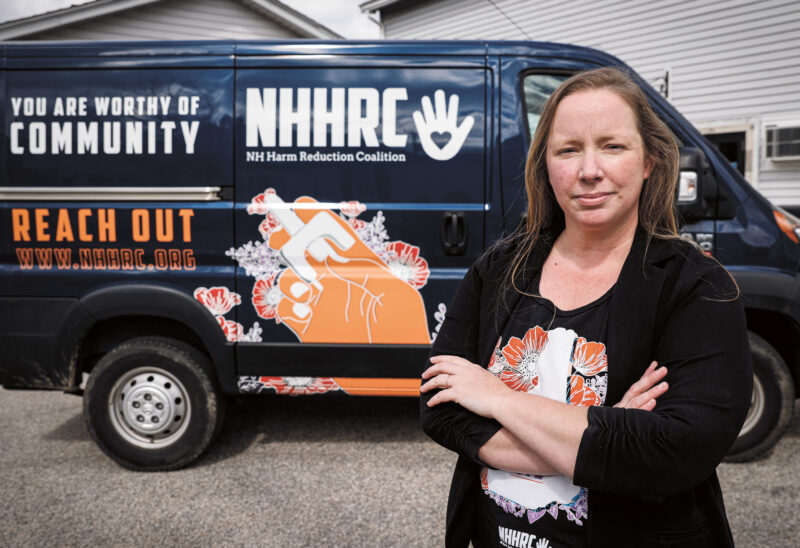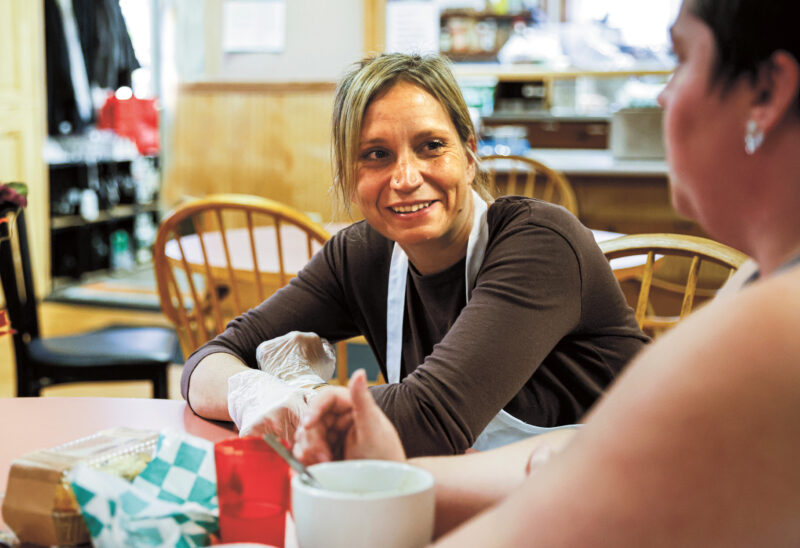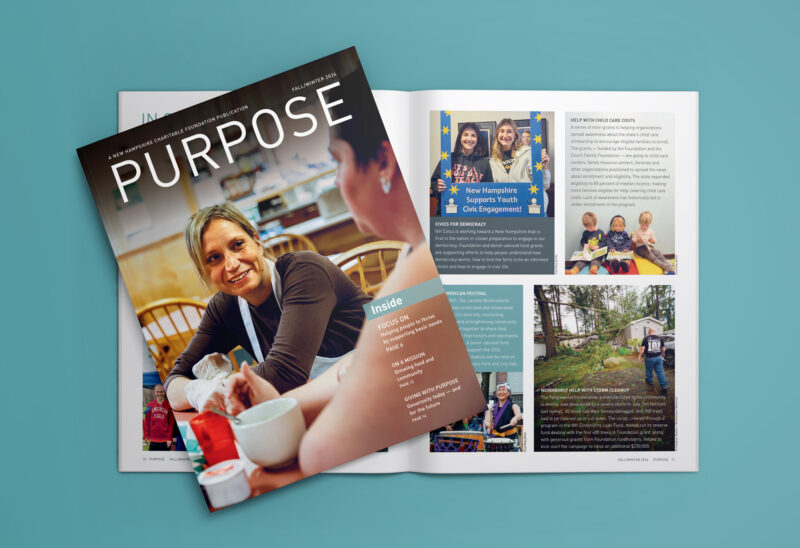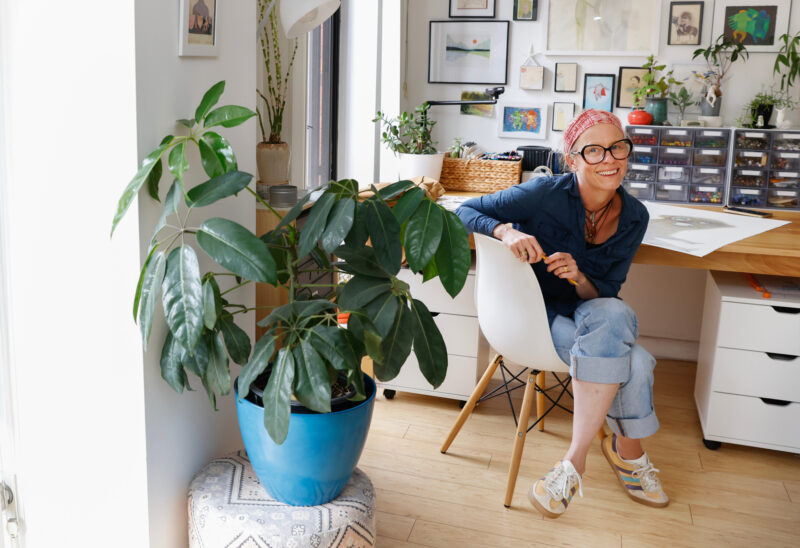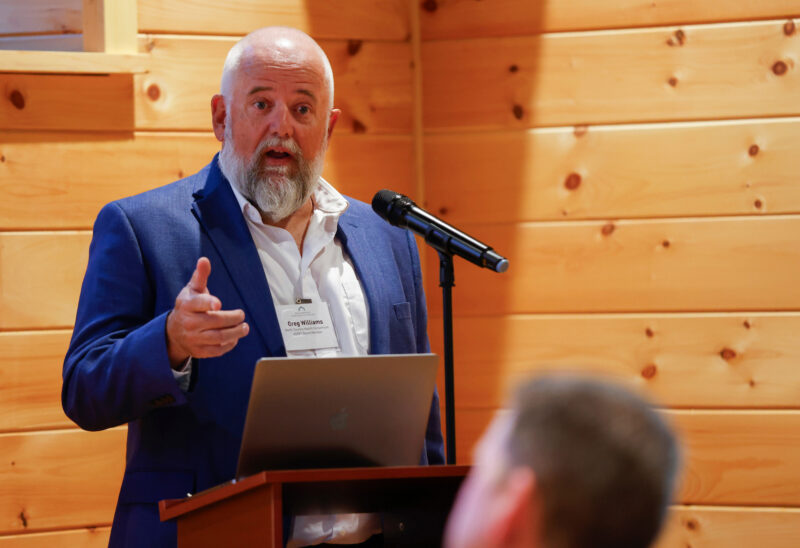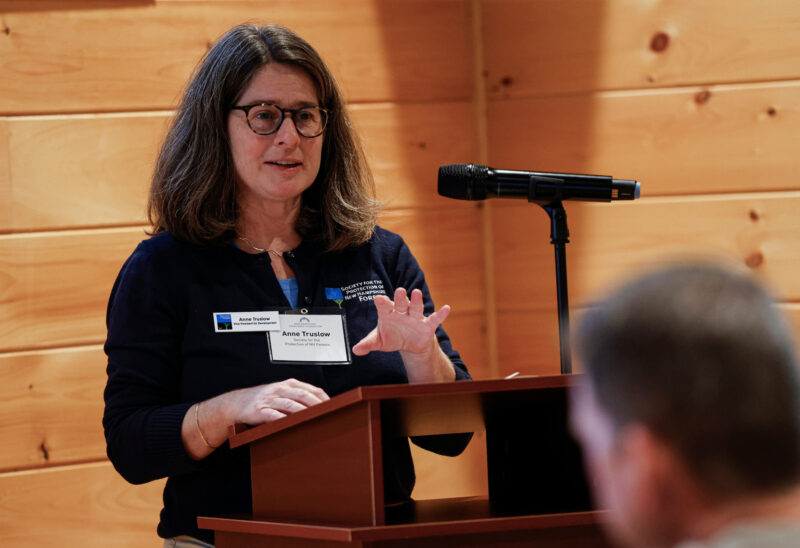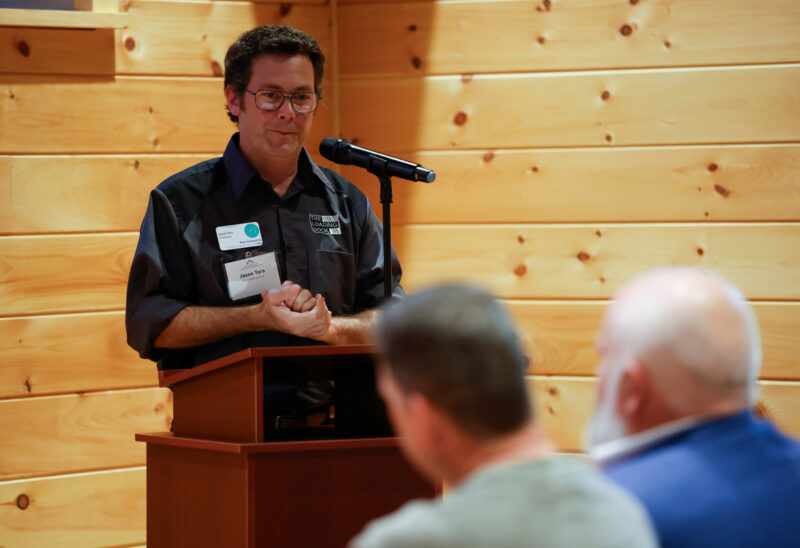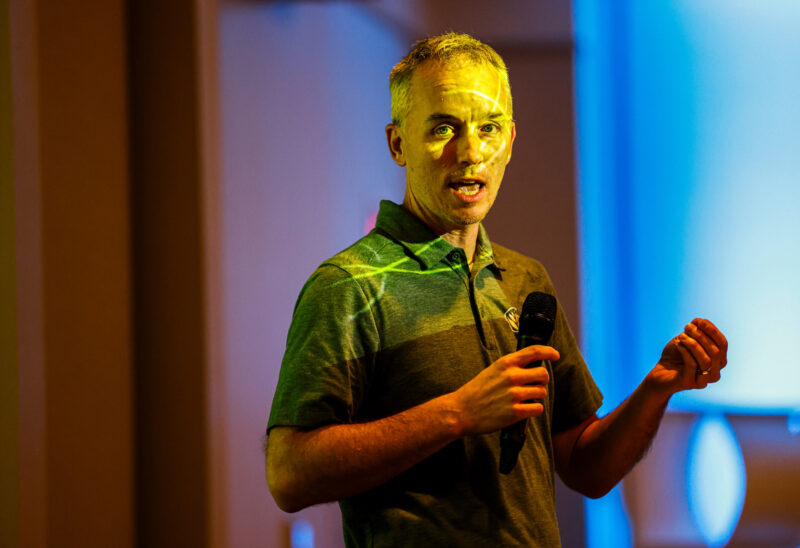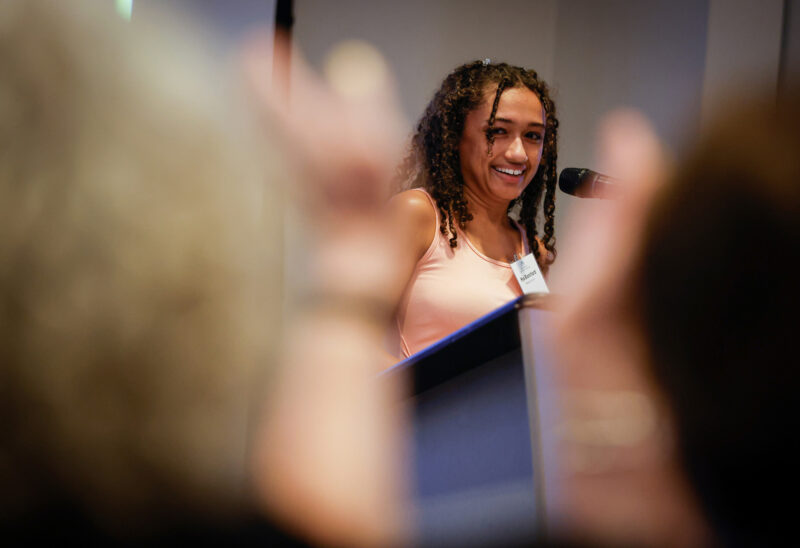Shaina Gates opened an exciting, ground-breaking chapter to her artistic career through what she calls “an amazing accident.”
While experimenting with whether she could create colorful images on black-and-white film, she discovered that folding sheets of film into geometric figures and exposing the figures to sunlight created vibrant, transparent colors and designs.
With help from the 2023 Piscataqua Region Artist Advancement Grant, Gates plans to take her work to new levels by continuing her creative research, producing larger works in an upgraded studio/darkroom, expanding her audience and expanding awareness of her form of experimental photography.
“My biggest goal is to be able to share and make this work with film known, particularly to the experimental and alternative photography field,” she said.
The “amazing accident” occurred as Gates worked with lumen printing, the process of placing objects on light-sensitive photographic paper and exposing it to sunlight or ultraviolet light to produce an image, or photogram, on the paper.
After producing colorful images on black and white photo paper, she wondered if she could do the same with black and white film.
Because she was an artist, not a photographer, she bought the cheapest box of sheet film she could find, precisely folded the film into various three-dimensional figures and exposed it to the sun for various lengths of time from several minutes, to several hours to several days. Vibrant, transparent colors appeared when she added basic photographic chemicals in her darkroom to wash the exposed surface of the film and stop further exposure.
“Now that I have sort of backfilled my knowledge of photography, I don’t think I would have bought that type of film,” she said. “Had I known more, the type of film I imagine I would have chosen just doesn’t do the same exciting thing.”
The accidental, exciting results compelled her to further explore and research producing color transparencies from black and white film, making her a pioneer in a process her research has shown is very limited in the art world.
The range of colors varies depending on the film’s formula and other factors such as the number of folded layers, the temperature, whether the film is exposed to the sun or a different ultraviolet light source, the length of exposure and the intensity of the light source.
The multiple folds that help create the colors and designs are far from random. Gates repeatedly folds and creases the film by precisely matching edges to edges and measuring corners to corners.
She then uses the three-dimensional figures to create colorful photogram prints by carefully unfolding the figures, placing them on photographic paper and exposing them to sunlight for up to a full day.
“Each one is a unique sun-based photogram, made without the use of cameras or digital technology,” she said.
Gates’s plans for the grant funding include renovating and expanding her studio and darkroom to allow her to process much larger works. She also is creating large transparencies and building display frames that will allow sunlight to pass through and project an image on a wall or other surface that moves in a slow arc through the day as the sun moves across the sky.
The $25,000 Piscataqua Artist Advancement grant is one of the largest unrestricted grants awarded to a single artist in the country. Finalists were painter Dustan Knight and artist/illustrator Isabella Rotman, who creates zines (home-made magazines). Each received $1,000. (Gates was one of the finalists for the award in 2002.)
With her upgraded studio and equipment, Gates plans to produce high-quality images to share her innovative work and research with other artists and photographers.
“I am in a unique position to promote my work as an innovative contribution to the field of experimental photography,” Gates said.
Gates’s work has been exhibited throughout New England and around the country. She is presenting a solo show at 3S Artspace Gallery in Portsmouth through November.

